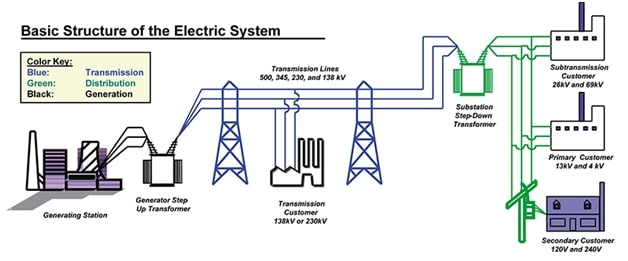What Are The Key Principles Of Electrical Noise Reduction In Engineering Applications?
Noise is everywhere in electronic systems, it's like that unwanted guest that just won't leave your house. It's irritating and can cause a lot of damage if not handled properly. Fortunately, there are techniques to reduce this noise and in this post, I will be delving deeper into noise reduction techniques in electronic systems.
The first technique is shielding. This technique involves designing an appropriate enclosure around a device or circuit to protect it from unwanted external electric or magnetic fields. The enclosure is usually made of metal, often aluminum, or copper and is grounded to the system's ground. For example, the metal casing which is usually located around a computer power supply acts as a shield to protect the components inside from external electromagnetic interference (EMI).
The second technique is filtering. This technique uses passive filters such as capacitors and inductors to remove noise signals from the input signals. Capacitors block AC signals while allowing DC signals to pass through and inductors filter out high-frequency signals. These components form a low pass filter that allows only the low-frequency signals to pass through. Active filters can also be used to amplify the useful signals while filtering out the unwanted noise signals.
The third technique is grounding. This technique involves connecting the circuit to a ground, which acts as a reference point for the system's signals. Grounding is essential because it helps in reducing the unwanted noise signals that might interfere with the circuit's signals. To ensure adequate grounding, it is best to connect the ground wires directly to the grounding rod or plate.
The fourth technique is isolation. This technique involves separating components that could cause noise from other components that are sensitive to it. For example, a power supply that emanates high-frequency noise can be isolated from the sensitive circuits by using a transformer. This technique is also known as galvanic isolation because it uses a transformer to isolate the two circuits electrically.
The fifth technique is the use of decoupling capacitors. Decoupling capacitors are small capacitors that are used to filter out any high-frequency noise that might be present in a circuit. They are usually placed near the power supply pins of the integrated circuits to reduce the noise they might introduce into the circuit. Decoupling capacitors work by providing a temporary storage for energy, which can then be used by the integrated circuit when it requires it.
The sixth technique is the use of twisted pair wiring. This technique involves using two wires that are twisted together to reduce radiated noise. The twisting of the wires helps in canceling out any external magnetic or electromagnetic forces that are present. This technique is commonly used in Ethernet cables to reduce crosstalk, which is when the electrical signal jumps from one wire to another.
The seventh technique is frequency hopping. This technique is mainly used in radio communication systems where the frequency of the signal is switched rapidly between different frequencies. The objective of frequency hopping is to reduce the effect of narrowband interference which can come from other radio signals.
The eighth technique is the use of ferrite beads. Ferrite beads are small cylinders that are used to filter high-frequency noise from a circuit. They are made of a ferrite material that has a high magnetic permeability which helps in attenuating the high-frequency noise signals. Ferrite beads are placed in series with the wire that carries the noise signal to filter out the noise.
In conclusion, noise in electronic systems can cause a lot of interference, distortion, and can even damage the circuitry if not handled properly. The above-listed techniques are some of the ways to ensure that noise is reduced to the barest minimum. Shielding, filtering, grounding, isolation, decoupling capacitors, twisted pair wiring, frequency hopping, and the use of ferrite beads all work together to ensure that the electronic systems operate as they should, with little to no interference from external noise.




Post a Comment for "What Are The Key Principles Of Electrical Noise Reduction In Engineering Applications?"